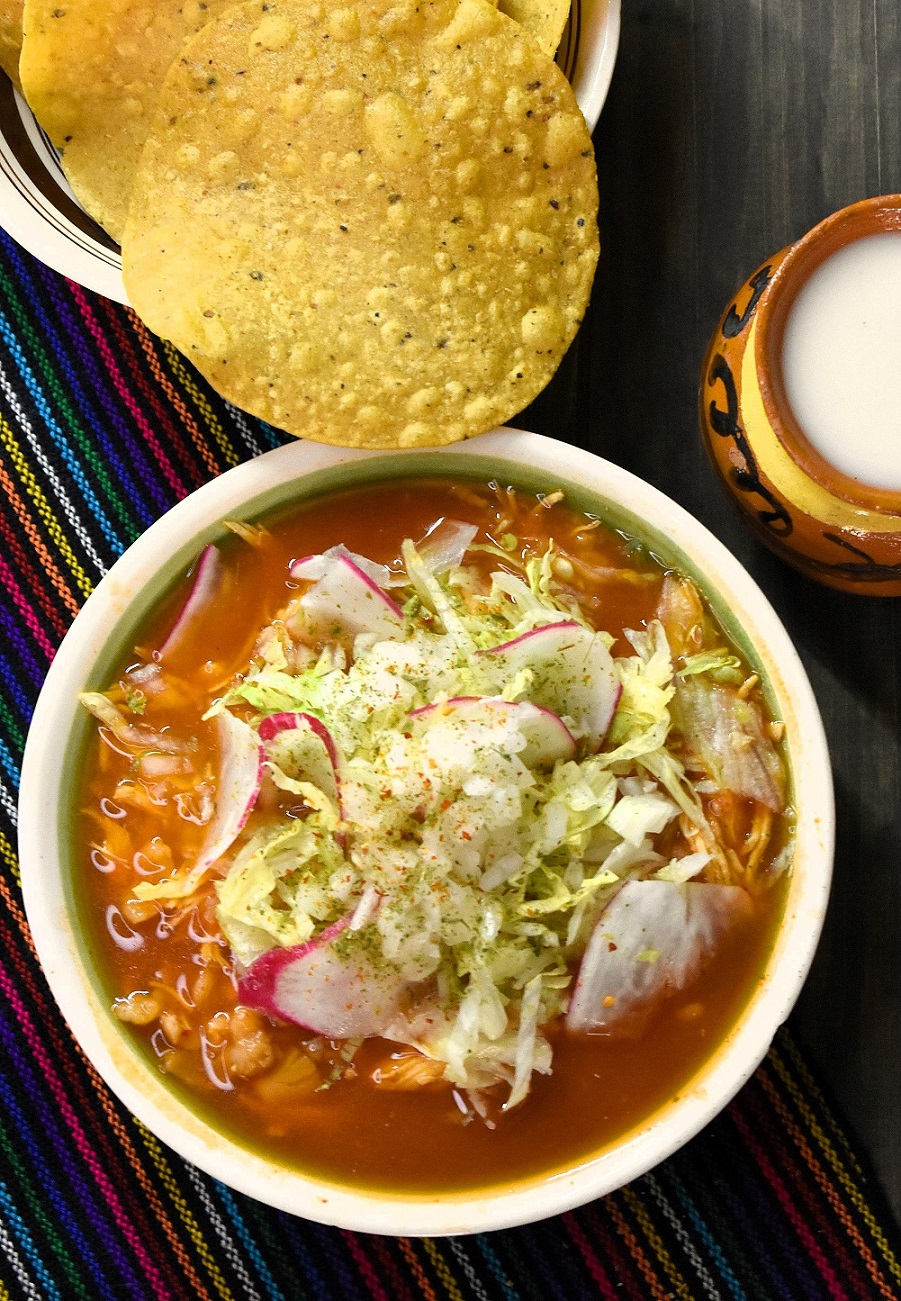Last Updated on June 1, 2025 by Karen
Learn how to make authentic Pozole Rojo de Pollo, a traditional Mexican chicken and hominy stew in red chile sauce. Easy, flavorful, perfect for special occasions or cozy nights. Includes tips, variations, and a printable recipe.
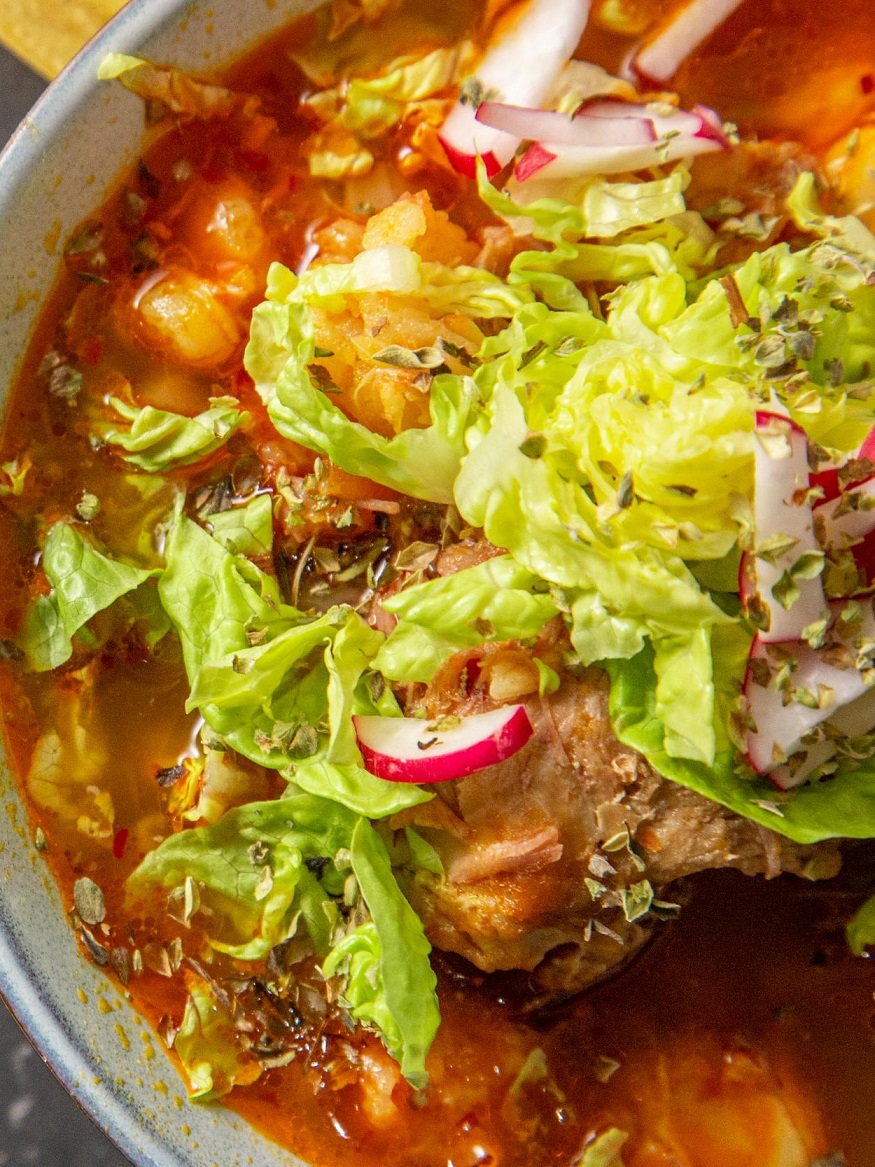
Pozole Rojo de Pollo, or Red Chicken Pozole, is a beloved traditional Mexican soup that blends comforting warmth, bold flavors, and deep cultural roots. Made with tender chicken, chewy white hominy, and a rich red broth flavored with dried chiles, this hominy stew is perfect for sharing any time of year.
While this dish is often made in a large stockpot for festive gatherings or family dinners, it’s simple enough for a cozy weeknight meal. If you’re cooking for a crowd or love having leftovers, it’s easy to make a big batch—and you’ll be glad you did. This is a traditional Mexican soup that tastes even better the next day.
In this post, you’ll learn how to make an easy soup version of the classic chicken pozole rojo recipe, complete with ingredient tips, cooking techniques, and delicious variations like pozole blanco and pozole verde.
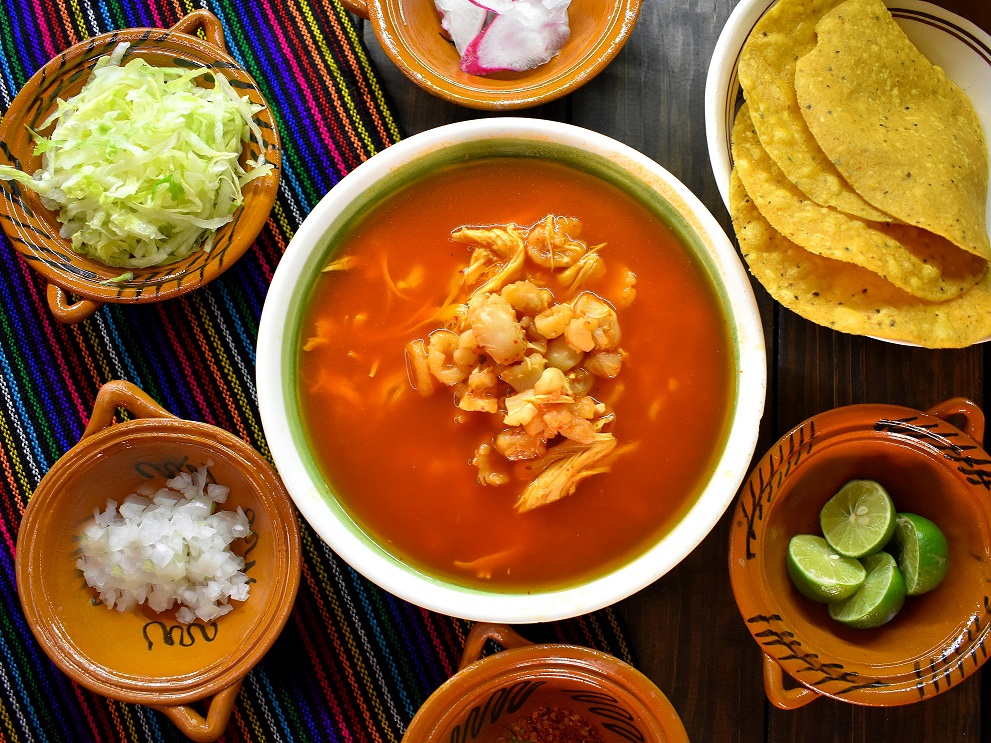
What is Pozole Rojo de Pollo?
This amazing recipe brings the heart of Mexican food into your kitchen. Whether you’re following a viral TikTok – make trend or diving into something new, chicken pozole rojo is both comforting and bold in flavor.
At the core of this dish are two essential dried chiles: guajillo peppers and ancho chiles. They are often dry roasted or simmered in hot water until softened, then blended into a smoky, vibrant red chile sauce. This rich base defines the flavor and color of the soup.
What is the History of Pozole?
Pozole has long been associated with special occasions, from New Year’s Eve to birthdays and family reunions. Originally made with pork, modern adaptations using chicken are just as flavorful and often lighter.
Whether you choose chicken breasts, chicken thighs, or even a whole chicken, the chicken cooks slowly in broth, becoming beautifully tender and perfect for shredding. It’s a celebration of flavor, community, and tradition—all in one pot.
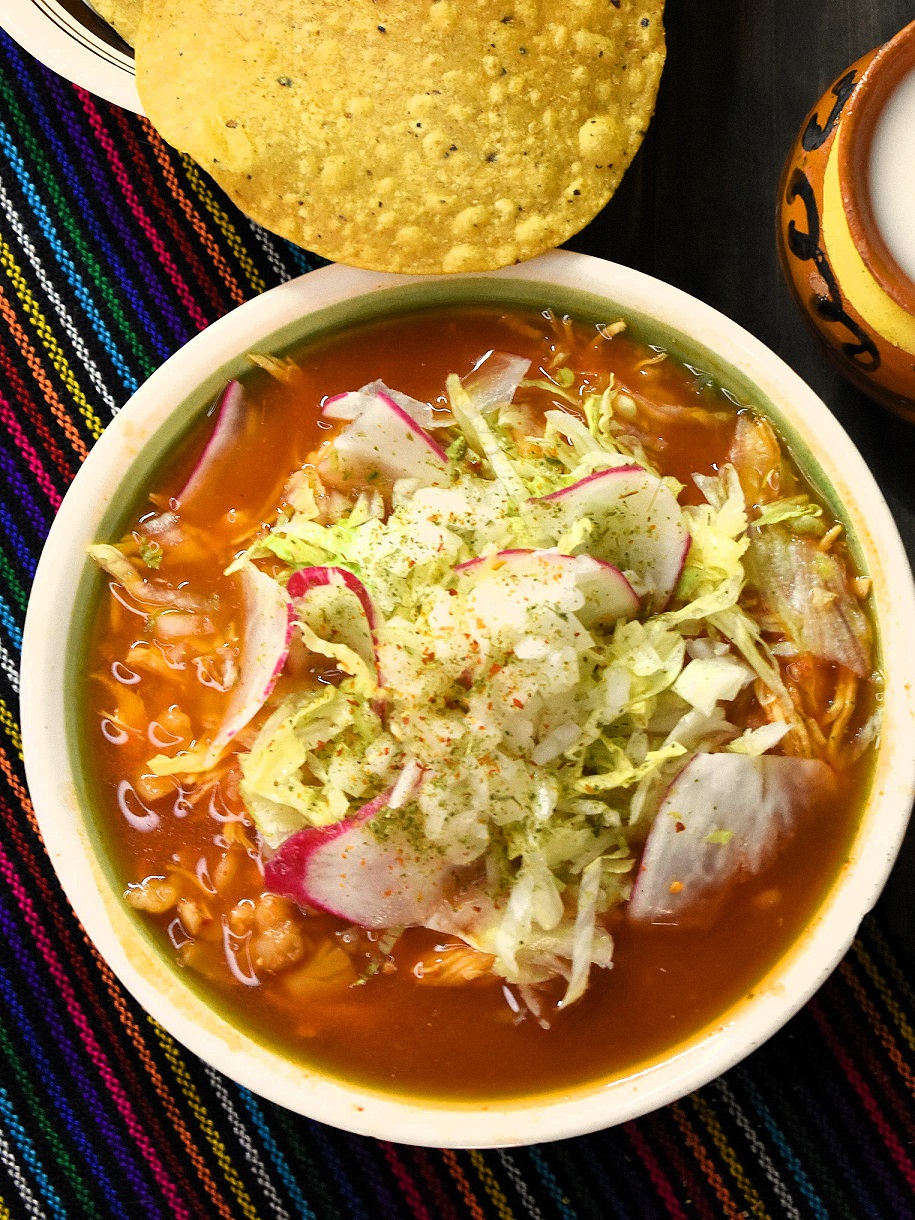
Taste, Texture, and Customization
The finished dish is a symphony of flavors and textures: a flavorful broth, chewy white hominy, tender shredded chicken, and a finishing touch of fresh garnishes like lime wedges, chopped cilantro, and thinly sliced radishes.
Want a spicier version? Add chili paste, chile de árbol, or your favorite hot sauce. Prefer something creamier? A dollop of sour cream or Mexican crema adds a cool contrast to the heat.
Is Pozole Healthy?
Yes, pozole can be a healthy meal, especially when made with lean meats like chicken, low-sodium broth, and topped with fresh vegetables like cabbage, radishes, and cilantro. Hominy provides fiber and energy, while the broth is typically low in fat. As long as you go easy on high-fat toppings and watch the salt, pozole is a balanced, nutrient-rich dish that can easily fit into a healthy diet.
Is Hominy Healthy?
Yes, hominy is healthy and can be a nutritious part of your diet. It’s made from dried corn kernels that have been treated through a process called nixtamalization, which boosts its nutritional value.
Hominy is naturally gluten-free and provides a good source of fiber, complex carbohydrates, and B vitamins like niacin and folate. It’s low in fat and contains some iron and magnesium, which support overall health. Because it’s less processed than many refined grains, hominy digests more slowly, helping with energy and blood sugar balance.
While it’s not high in protein, it pairs well with beans or lean meat for a balanced meal. In dishes like pozole, hominy adds bulk and heartiness without being heavy in calories. Just be mindful of added sodium if you’re using canned hominy—rinsing it can help reduce salt content.
What is a Good Substitute for Hominy?
If you need a substitute for hominy, here are some of the best options depending on the dish you’re making—especially for soups or stews like pozole:
1. Canned White or Yellow Corn
This is the easiest and most accessible substitute. While it doesn’t have the chewy texture of hominy, it provides a similar corn flavor. Use it when texture isn’t the focus.
2. Chickpeas (Garbanzo Beans)
For a similar texture and mild flavor, chickpeas are a great stand-in. They’re hearty, slightly nutty, and hold up well in soups and stews.
3. White Beans (like Great Northern or Cannellini)
These have a creamy texture and mild taste, making them a solid choice for pozole-style dishes. They won’t mimic the flavor of hominy exactly, but they add similar bulk and body.
4. Frozen Corn
Frozen corn kernels offer more texture than canned corn, and while they’re not as chewy as hominy, they’re a good quick fix.
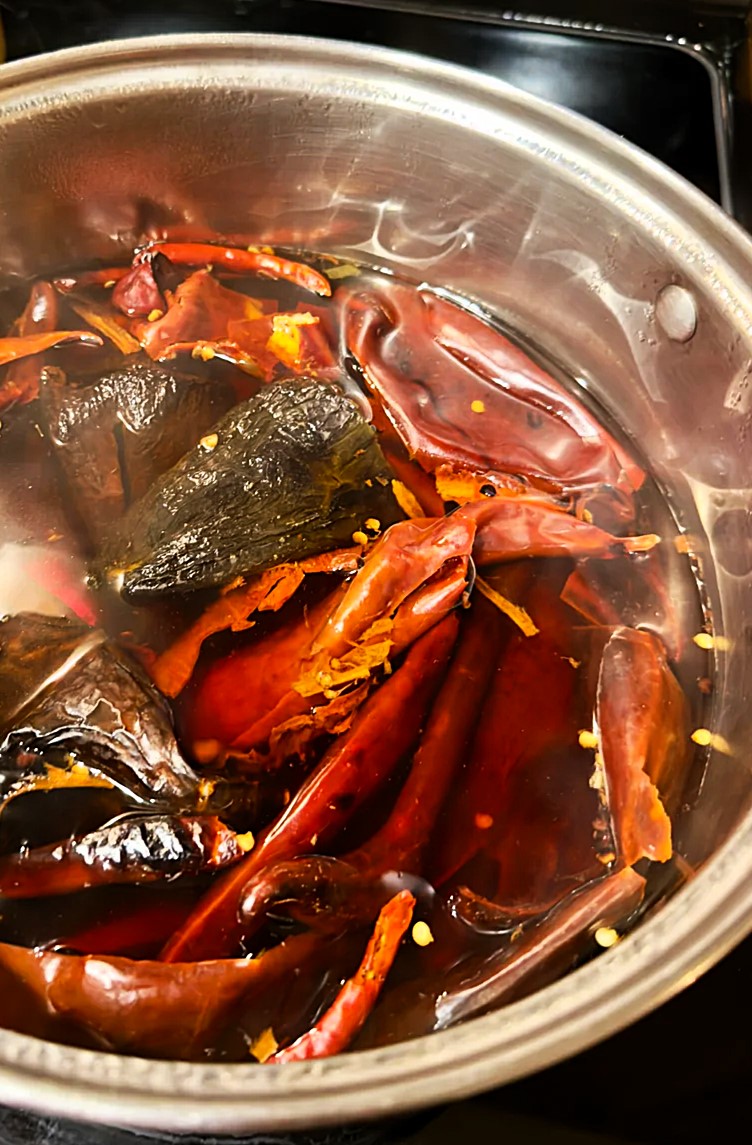
Ingredients You’ll Need to Make the BEST Red Chicken Pozole
Dried guajillo peppers
Add bright red color, mild heat, and tangy-sweet flavor. Substitute with New Mexico or pasilla chiles.
Ancho chiles
Provide smoky, sweet depth that balances the heat. Mulato chiles are a darker, more bitter substitute.
Chicken breasts or thighs
The main protein—breasts are leaner, while thighs are juicier and more flavorful. A whole chicken or pork shoulder are traditional alternatives.
Garlic cloves
Used in both the broth and chile sauce for savory flavor. Always use fresh garlic if possible.
Yellow onion
Forms the aromatic base. Substitute with white onion, which is commonly used in Mexican cooking.
Chicken broth
Adds richness and depth to the soup. You can use vegetable broth or water with bouillon as substitutes.
White hominy
Gives pozole its signature texture. Canned is convenient; dried hominy offers a firmer, more authentic bite.
Ground cumin
Brings earthy warmth. Toast lightly before adding to intensify the flavor.
Mexican oregano
Adds a citrusy, herbal touch. If unavailable, use marjoram or thyme.
Chili powder
Enhances chile flavor without extra heat. Use moderately to avoid overpowering the fresh chiles.
Smoked paprika
Adds subtle smokiness. Sweet paprika can be used for a milder option.
Tomato paste
Thickens and deepens the broth. Substitute with enchilada sauce or crushed tomatoes.
Bay leaf
Adds herbal notes. Use one or two and remove before serving.
Salt
Essential for flavor balance. Start light and adjust throughout the cook time.
Lime juice
Cuts richness and brightens the broth. Freshly squeezed is ideal.
Corn kernels (optional)
Add texture and sweetness. Use fresh, frozen, or canned.
Sour cream (optional)
Adds cool creaminess. Sub with crema Mexicana or Greek yogurt.

How to Make Red Chicken Pozole
Step 1: Prepare the Dried Chiles
Place the guajillo and ancho chiles along with smashed garlic in a small pan or saucepan. Cover with hot water and simmer on medium-low heat for 5–6 minutes. Keep the lid on slightly ajar to trap steam and soften the chiles evenly.
Step 2: Blend the Chile Sauce
Transfer softened chiles and garlic to a blender with ½ to 1 cup of soaking liquid. Blend until smooth. You can strain the mixture through a sieve to remove skins for a silky texture.
Step 3: Sauté Aromatics
In a large stockpot, heat oil over medium heat. Add diced onion and minced garlic, sauté 4–5 minutes. Make sure to stir frequently to prevent garlic from burning.
Step 4: Add Spices
Mix in cumin, oregano, chili powder, and smoked paprika. Stir for 1–2 minutes until fragrant. If you have time, toasting spices in oil releases their essential oils and boosts flavor.
Step 5: Sear the Chicken
Add chicken and brown each side for 2–3 minutes. Make sure you don’t overcrowd the pot—brown in batches if needed for better sear.
Step 6: Add Broth and Hominy
Pour in chicken broth, hominy, bay leaf, and blended chile sauce. Stir well.
Optional: Add a few cups of water to adjust broth thickness if desired.
Step 7: Simmer Gently
Bring to a gentle simmer, reduce to lower heat, and cover partially. Simmer for 30–60 minutes or longer.
Tip: Stir occasionally to prevent sticking on the bottom of the pan.
Step 8: Shred Chicken
Remove the chicken, shred it using forks, and return to the pot. Discard bay leaf.
Best practice: Taste and adjust seasoning before serving.
Step 9: Serve and Garnish
Ladle into bowls. Top with cilantro, radishes, lime juice, sour cream, or tortilla chips.
Storage tip: Let leftovers cool, then refrigerate in an airtight container. Use parchment or plastic wrap to prevent freezer burn if freezing.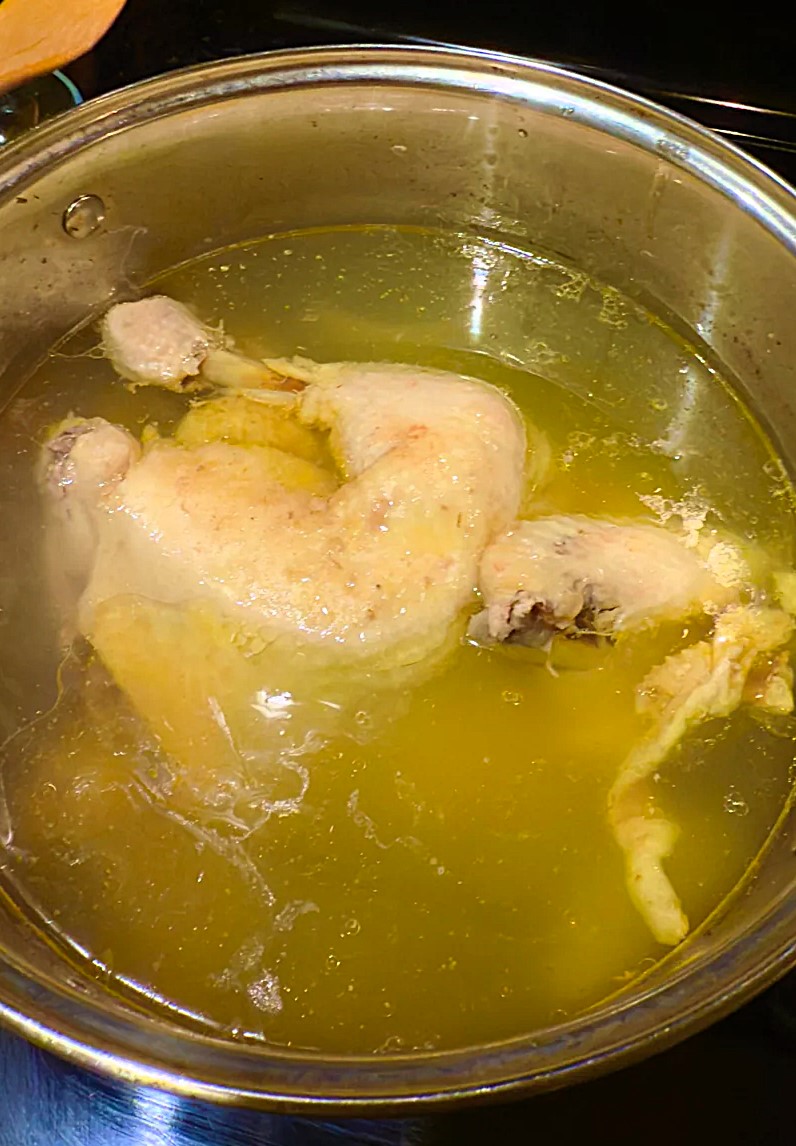
How Do You Store Leftover Pozole?
Pozole is one of those comforting, hearty dishes that often tastes even better the next day. Whether you’ve made a big batch of red chicken pozole or another variety, knowing how to store it properly ensures that every bowl remains delicious and safe to eat.
After cooking, allow the pozole to cool to room temperature. It’s best to do this within two hours to avoid any risk of bacterial growth. Once cooled, transfer the soup to airtight containers. Glass or BPA-free plastic containers with tight-fitting lids are ideal for maintaining flavor and freshness.
Pozole can be safely stored in the refrigerator for up to four to five days. Keep any toppings—like shredded cabbage, chopped onions, sliced radishes, or avocado—separate. This helps maintain their texture and prevents them from getting soggy.
What is the Best Way to Reheat Leftover Pozole?
To reheat, place the pozole in a pot over medium heat and stir occasionally until it’s warmed through. If the soup has thickened in the fridge, add a bit of water or chicken broth to bring it back to the right consistency. Always reheat only the amount you plan to eat, and avoid reheating any fresh garnishes—these should be added just before serving to keep their flavor and crunch.
Properly storing and reheating pozole not only extends its life but also makes it easy to enjoy a warm, flavorful meal anytime without extra effort.
Can You Freeze Pozole?
Yes, you can freeze pozole, and it freezes quite well—especially if you’re making a large batch. Both red and green pozole (including red chicken pozole) can be stored in the freezer for up to 3 months without much loss of flavor or texture.
For best results, freeze only the soup base (broth, hominy, chicken or pork). Avoid freezing it with fresh toppings like cabbage, radishes, or avocado—those should be added fresh after reheating.
Here’s how to freeze pozole properly:
1. Cool the pozole completely before freezing to avoid ice crystals and preserve flavor.
2. Divide it into portions using airtight containers or heavy-duty freezer bags. Leave a little space at the top for expansion.
3. Label with the date so you can track freshness.
4. When ready to eat, thaw overnight in the fridge or reheat gently on the stove from frozen.
Reheated pozole tastes just as delicious and makes a great, ready-to-go meal for busy days!
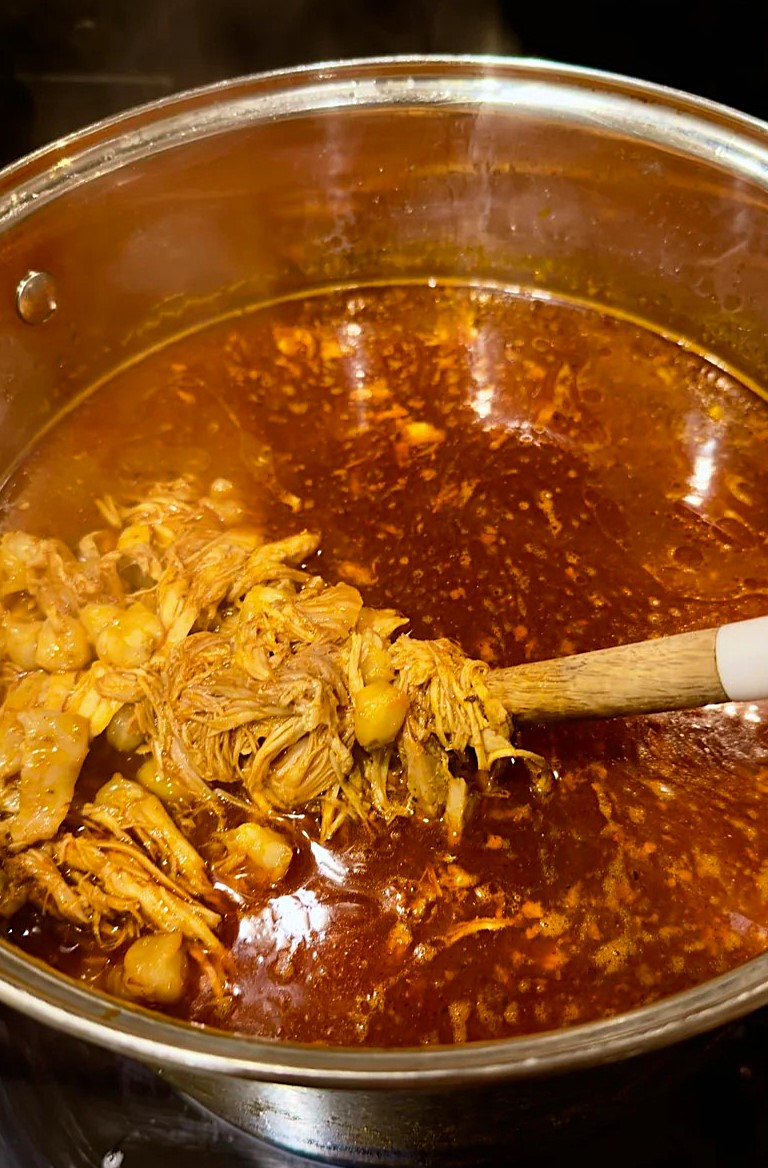
What Do You Serve with Red Chicken Pozole?
Red chicken pozole is a rich, comforting Mexican stew that’s best enjoyed with a variety of fresh toppings and flavorful sides. Traditionally, it’s served with a spread of garnishes that allow each person to customize their bowl. Common toppings include shredded cabbage or lettuce for crunch, thinly sliced radishes for a peppery bite, chopped white onion or pickled red onions for sharpness, and fresh cilantro for herbal brightness. A squeeze of lime adds acidity to balance the rich broth, while dried oregano and crushed red pepper can be sprinkled on top for extra aroma and heat. Creamy additions like avocado slices or crumbled queso fresco are also popular for added texture and flavor.
To complete the meal, red chicken pozole is often paired with warm corn tortillas or crispy tostadas, which are perfect for scooping or dipping into the broth. Other traditional sides include refried beans, fluffy Mexican rice, and pickled jalapeños or carrots for a tangy kick. For festive occasions, tamales make an excellent companion dish.
To drink, refreshing options like agua fresca—such as hibiscus (jamaica), tamarind, or horchata—are commonly served, along with Mexican beers or citrusy cocktails like margaritas or palomas. This combination of toppings, sides, and drinks makes pozole not just a meal, but a complete, satisfying dining experience.
Best Red Chicken Pozole Recipe (Pozole Rojo de Pollo)
Ingredients
- 3 large dried ancho chiles stems removed and deseeded
- 2-3 dried guajillo chiles stems removed and deseeded
- 2 garlic cloves smashed
- 2 tbsps olive oil
- ½ medium yellow onion diced
- 3 garlic cloves minced
- Salt and pepper to taste
- 1¼ tsp ground cumin
- 1 tsp dried Mexican oregano
- ½ tsp smoked paprika
- ¼ tsp ground cinnamon
- 2 lbs boneless skinless chicken breasts
- 2 bay leaves
- 4 cups chicken broth
- 1 25-oz can white hominy, with liquid
- Optional toppings: sliced radishes, fresh cilantro, lime wedges, sour cream, corn kernels, tortilla chips
Instructions
- In a small saucepan, simmer dried chiles and smashed garlic in water for 5–6 minutes. Let cool slightly. Blend chiles and garlic with a bit of soaking liquid until smooth. Set aside.
- In a large pot, heat olive oil over medium heat. Sauté onion and minced garlic until soft. Add spices and stir for 1–2 minutes. Add chicken and sear 2–3 minutes per side.
- Add broth, hominy, bay leaves, and blended chile sauce. Stir to combine. Bring to a simmer, then reduce heat and cook for at least 30 minutes, partially covered.
- Remove chicken, shred with forks, return to the pot, and discard bay leaves.
- Taste, adjust seasoning, and serve with toppings of choice.
